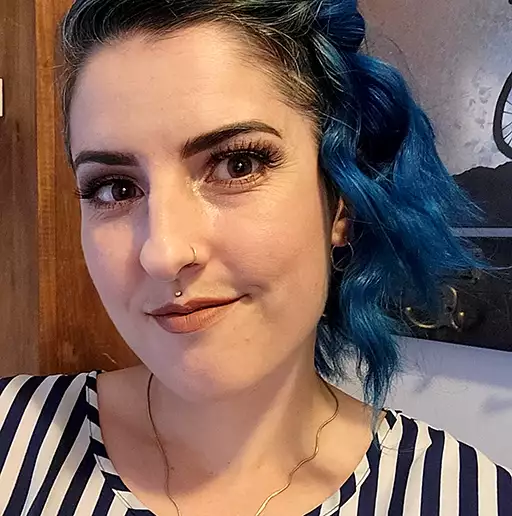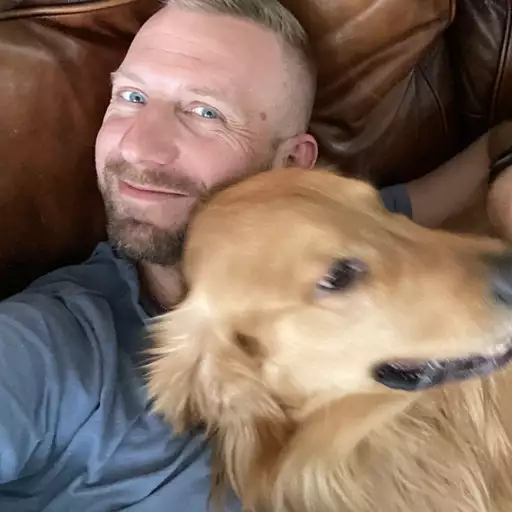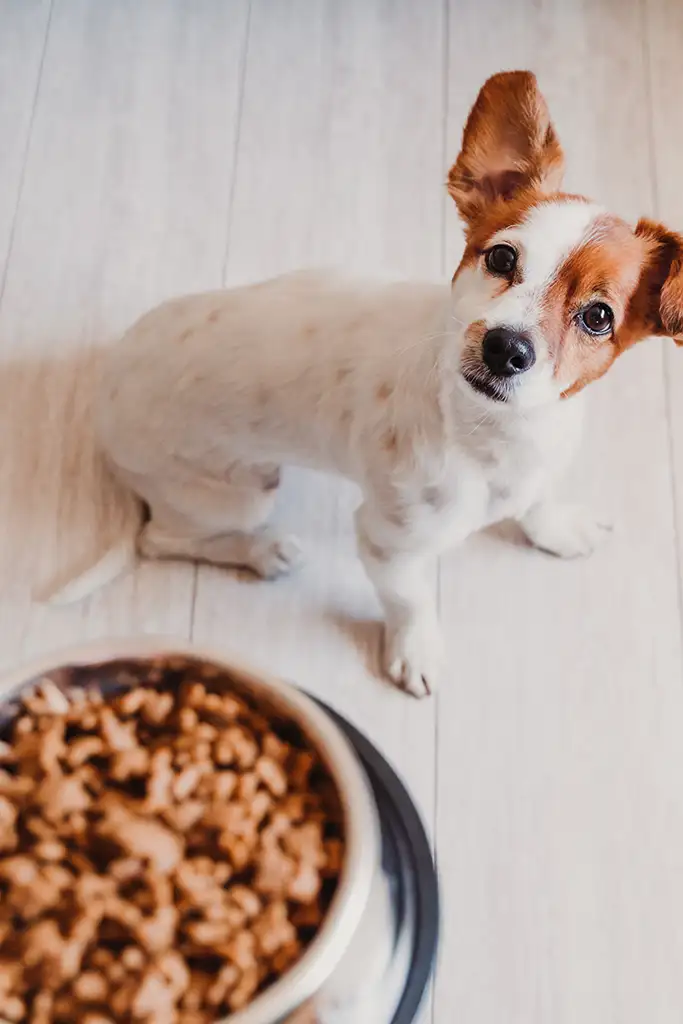Cavachon Breed Profile, Characteristics, Fun Facts and Pictures
Quick Guide
- Pedigree: Mixed breed, Cavalier King Charles Spaniel and Bichon Frise
- Other Names: None
- Height: 10 to 13 inches
- Weight: 10 to 18 pounds
- Breed Group: Not AKC recognized
- Lifespan: 10 to 15 years
- Intelligence: Moderate
- Trainability: Moderate
- Exercise Needs: Moderate
- Shedding: Low
- Good with Kids: Yes
- Good with Dogs: Yes
- Good with Pets: Yes
A cross between two small breeds, the Cavachon is a lively, affectionate, and playful little dog. This breed comes from the crossing of a Cavalier King Charles Spaniel and a Bichon Frise with the hopes that he will inherit the best characteristics from both. Though you cannot make exact predictions about a mixed breed dog, the Cavachon is generally a friendly family companion who gets along well with children and other dogs. This breed is not overly active and their small size makes them adaptable to apartment and condo life. If you’re in the market for a small-breed dog that will fit into your family life, the Cavachon may be one to consider.
Fun Facts About the Cavachon
- With its Bichon Frise blood, the Cavachon typically sheds less than the average dog but his coat may not be as hypoallergenic as the parent breed’s.
- Though he is a lively and playful breed, the Cavachon is not overly active – he would be completely content to spend the day lazing on the couch with you by his side.
- The Cavachon is not recognized by the American Kennel Club but he is recognized by various hybrid and designer dog registries.
Coat and Appearance
As a mixed breed, it is difficult to make accurate predictions about how a litter of Cavachons will turn out. The only way to know what your dog will look like as an adult is to wait for him to grow up! A combination of two small breeds, the Cavachon can be expected to remain fairly small. Both parent breeds achieve an average weight up to 18 pounds, so you should expect your Cavachon to achieve a mature weight in that range as well. In terms of height, Cavalier King Charles Spaniels are a little taller than Bichon Frise, but the average height range for the breed is about 10 to 13 inches.
In terms of appearance, the Cavalier King Charles Spaniel and the Bichon Frise have similar body types. They are both small dogs, though only the Cavalier King Charles Spaniel is classified as a toy breed, with round heads and long floppy ears. Both breeds have round, dark eyes and dark noses. The Bichon Frise is known for his curly white coat while the Cavalier King Charles Spaniel exhibits a combination of colors. There are actually four coat colors for the Cavalier King Charles Spaniel – Blenheim, tricolor, ruby, and black-and-tan. The Blenheim variety is chestnut and white, the tricolor is black and white with tan points, the ruby is solid red, and the black and tan is black with tan points. As a combination of these two breeds, the Cavachon typically exhibits a dual-color or tri-color coat, though most dogs have a good deal of white in their coats with black, tan, or apricot colored markings.
The Cavalier King Charles Spaniel has a medium-length, silky coat with feathering on the chest, legs, feet, tail, and ears. The Bichon Frise’s coat is fairly long, but it is tightly curled and dense. The Cavachon’s coat may vary in length from one litter to another, but most dogs exhibit some degree of waviness or curl in their coats. The Cavalier King Charles Spaniel sheds moderately but the Bichon Frise sheds minimally. You can expect your Cavachon to shed to some degree, but it may be less than the average for most dog breeds.
Read More about Chorkie
History of the Breed
The Cavachon is a mixed breed that results from crossing a Cavalier King Charles Spaniel with a Bichon Frise. There is no doubt that mixed breed dogs have been bred throughout the centuries, but it is only within the past few decades that the “designer dog” movement has gained speed. The term designer dog usually refers to a mixed breed – an intentional cross between two breeds to produce desired traits. Though these two breeds may have been mixed before, there is a specific breeder who claims to have created the Cavachon breed in 1996 – Gleneden.
Because the Cavachon is a blend of two pure breeds, its history is a combination of their histories. The Cavalier King Charles Spaniel is a breed of UK origin that is classified as a toy breed by both The Kennel Club and the AKC. The origins of the breed can be traced back to the early part of the 18th century when John Churchill, the 1st Duke of Marlborough became known for his red and white hunting spaniels known as King Charles Spaniels. Eventually, the red and white type became known as the Blenheim spaniel, named after Churchill’s estate, Blenheim.
Throughout the years, numerous attempts were made to revive the original King Charles Spaniel type. Many breeders used the now extinct Toy Trawler Spaniel in their attempts. It wasn’t until the 1920s, however, that the Blenheim Spaniel made a resurgence. To encourage this revival, American Roswell Eldridge created a contest and offered a prize of twenty-five pounds for the best male and female spaniel of the Blenheim type. Though Eldridge died before the contest concluded, other breeders followed his lead and created the Cavalier Club in 1928. They also published the first breed standard for the King Charles Spaniel, Cavalier type.
The Second World War saw many breeds in steep decline as a majority of the breeding stock was destroyed due to wartime food shortages. After the war, six dogs were used to develop the modern-day Cavalier. The Cavalier King Charles Spaniel was officially recognized by the Kennel Club in 1945 and the breed arrived in the United States sometime during the 1950s. The first American breed club was formed in 1994 and the Cavalier King Charles Spaniel was accepted by the AKC in 1995. One year later, Gleneden kennel began breeding the Cavachon.
The history of the Bichon Frise predates the Cavalier King Charles Spaniel by several centuries. Descended from the Barbet (or Water Spaniel) and the Standard Poodle, the Bichon Frise is one of four Bichon-type dogs. Though Spanish in origin, this breed came to be associated with the French who turned it from a sailing dog into a lap dog. The four original Bichons were the Bichon Maltese, the Bichon Bolognaise, the Bichon Havanese, and the Bichon Tenerife. The Bichon Tenerife became particularly popular in France during the Renaissance and its popularity skyrocketed during the reign of Henry III in the late 1500s. Its population rose and fell over the next few centuries until it once more gained popularity in the late 19th century.
By the 1800s, the Bichon Tenerife had become a common dog, running the streets of Barbary. In the 1930s, the release of Herge’s The Adventures of Tintin featuring a fluffy white terrier sparked an increase in popularity for the breed. At the time, the breed was still known as either the Tenerife or the Bichon but the president of the FCI proposed a new name – Bichon Frise. The word “frise” means curly in French and the name was quickly adopted. The Bichon Frise came to the United States in 1955 and it was accepted by the AKC in 1972. Today, it is consistently ranked among the top 40 most popular dog breeds according to AKC registration statistics.
Temperament and Personality
Gleneden, the kennel that claims to have developed and named the Cavachon breed, describes it as a friendly, gentle, and playful dog – the perfect companion pet and family dog. Because the Cavachon is a mixed breed, it is impossible to make predictions about the exact temperament and personality because it will vary from one litter to another. You can, however, expect the breed to exhibit a combination of characteristics from the Cavalier King Charles Spaniel and the Bichon Frise.
The Cavalier King Charles Spaniel is a lively, playful, and highly affectionate breed. The Bichon Frise is often described as being cheerful and merry. They are also described as being gentle, playful, and mild-mannered. Many Cavachon owners say that these are the same temperament and personality traits seen in the Cavachon – these dogs are friendly, good-natured, playful, and affectionate with family. They are quick to make friends and love to spend time with their loved ones. It is not a breed that does well when left alone for long periods of time.
In terms of how well they get along with children, dogs, and other pets, each Cavachon is different. Early socialization is always recommended to ensure that your dog develops from a frisky little puppy into a well-adjusted, obedient adult. This breed does tend to get along well with children as long as they are introduced at a young age. They can also get along with other dogs, cats, and other pets when the same conditions apply. Some Cavachons, however, may chase small animals if they inherit the trait from their Cavalier King Charles Spaniel parent. This breed is not known to be aggressive in anyway and they don’t make particularly good guard dogs, though they may bark at strangers.
You might like to Read about Puggle
Training Tips
Small-breed dogs are notorious for being difficult to housetrain, but the Cavachon is generally a fairly trainable breed. Both parent breeds have moderate to high intelligence, so you can expect your dog to respond well to positive reinforcement training. To ensure that your dog remains obedient, however, you should always maintain a firm and consistent hand in training. Once you settle on a verbal command, make sure to keep using it and ensure that everyone in the family does as well. Be consistent about issuing praise and rewards but don’t go overboard on the treats. A dog this small is prone to obesity with overfeeding.
When it comes to obedience training, you should keep your training sessions fairly short so your Cavachon doesn’t get bored. Two or three daily sessions of ten minutes each is preferable to one longer 30-minute session. You’ll want to reinforce your dog’s training throughout his life and make an effort to curb problem behaviors quickly, before they turn into bad habits. Enrolling your Cavachon in puppy classes is a great way to socialize him from an early age and it will help you learn how to effectively train your dog. Early socialization and training is especially important if you have children or other pets in your household.
Exercise Requirements
Neither the Cavalier King Charles Spaniel nor the Bichon Frise are particularly active breeds – they both have low to moderate exercise requirements. This being the case, you can expect your Cavachon to be similar. A daily walk of about thirty minutes is usually sufficient to work off your dog’s energy, though he’ll never say no to some additional playtime. Making sure your dog is properly exercised will also help to reduce the risk for destructive behaviors.
Grooming Tips
How much time and effort you have to put into grooming your Cavachon depends on the type of coat he inherits. The Cavalier King Charles Spaniel’s coat is medium-length and fine while the Bichon Frise’s coat is dense and curly. Most Cavachons have a wavy to curly coat, though the length and density will vary according to breeding. You should expect to brush your dog’s coat at least three or four times a week, depending how much your dog sheds. Regular brushing will also help to distribute the natural oils produced in your dog’s skin that keep his skin and coat healthy. You may want to have your dog groomed and trimmed a few times a year as well. If you want to make your Cavachon’s coat as easy to maintain as possible, have it cut short in a pet clip or puppy clip. In addition to coat maintenance, you should also trim your dog’s nails twice a month, brush his teeth daily, and clean his ears as needed.
Nutrition and Feeding
As a small-breed dog, the Cavachon requires a calorie-dense diet. Though small dogs need fewer total calories per day than larger dogs, their calorie needs per pound of bodyweight are actually much higher due to their fast metabolisms. For example, a large-breed dog may need somewhere between 20 and 30 calories per pound of bodyweight but a small-breed dog like the Cavachon may need 30 to 40. Your dog’s calorie needs will vary depending on his age, weight, and activity level but it is safe to assume that a dog food formulated for small-breed dogs is the best place to start. Feed your Cavachon a small-breed puppy formula until he nearly reaches his adult size then switch to a small-breed adult formula.
Small-breed dog foods are typically high in protein and fat. Protein is the most important nutrient for any dog because it supports growth and development in puppies and promotes lean muscle mass in adult dogs. Fat is also important because it is a concentrated source of energy – small-breed dog foods tend to be higher in fat than large-breed formulas. When shopping for dog food for your Cavachon, look for a recipe that is made with high-quality ingredients and be sure that it lists a source of quality animal protein as the first ingredient. Look for healthy animal fats as well and try to limit the number and quantity of carbohydrates, focusing on whole grains or grain-free options. Follow the feeding recommendations according to your dog’s age and weight, keeping an eye on his bodyweight and condition to make sure he isn’t gaining an unhealthy amount of weight. Your vet can help you determine a healthy bodyweight for your dog.
Cavachon Puppy Pictures:
[instagram-feed type=hashtag hashtag=”#cavachon” num=9 cols=3 showcaption=false]Common Health Problems
Many people believe that mixed breed dogs are healthier than pure breeds because they have a larger gene pool to draw from. While this may be true in some cases, it is not a guarantee. If both parent breeds have a high risk for the same condition, your Cavachon’s risk will be that much higher. For the most part, the Cavachon is a healthy breed but all dogs are prone to certain conditions – here is an overview of the conditions you might want to look out for with this breed:
- Ear Infections – Both the Cavalier King Charles Spaniel and the Bichon Frise have long, floppy ears so you can expect your Cavachon to have them as well. Flop ears tend to harbor moisture because there is reduced air flow to the inner ear and that increases your dog’s risk for ear infections. Check your dog’s ears daily and clean them once a week to prevent infection.
- Flea Allergies – A flea infestation has the potential to cause severe problems for any dog, but the Cavachon has a particularly high risk for flea allergies. A single flea bite can cause an allergic reaction in this breed and an infestation can happen quickly because the dog is so small. Protect your dog with a monthly flea and tick preventive.
- Eye Problems – Both the Cavalier King Charles Spaniel and the Bichon Frise are prone to eye problems like cataracts and keratoconjunctivitis sicca (or dry eye). A cataract is a cloudiness or opacity that forms in the lens of the eye, obstructing vision. It typically isn’t painful but it can be a progressive condition, leading to a total loss of vision if not treated. Keratoconjunctivitis sicca is often the result of a plugged tear duct or damage to the tear producing glands. It can typically be managed with medicated drops.
- Mitral Valve Disease – The most common acquired heart disease in dogs, mitral valve disease is fairly common in the Cavalier King Charles Spaniel. The first sign is often a heart murmur, caused by the mitral valve thickening and degenerating, allowing blood to leak out. This condition can be managed with medications if caught early, and it may develop into congestive heart failure if not treated.
- Patellar Luxation – This condition affects may small and toy breeds. It occurs when one or both kneecaps are unstable and prone to slipping (luxating) out of place. This can be a minor issue or it can be severe enough to cause lameness in the affected leg. Depending on the severity, it can be managed with pain medications and anti-inflammatories or it may require surgical correction.
- Syringomyelia – A painful disease seen in the Cavalier King Charles Spaniel, syringomyelia is a condition in which fluid-filled cavities form in the dog’s spinal cord near the brain. Scratching in the air next to the neck is the most common sign of this disease and it may develop into severe pain in the head, neck and shoulders. Unfortunately, treatment options are limited and they depend on whether the dog is exhibiting symptoms or not.
- Dental Problems – Small dogs often develop dental problems due to the compressed nature of their skulls and jaws. The Bichon Frise is particularly prone to dental health issues, so be on the lookout for dental problems in your Cavachon. Brush your dog’s teeth daily and make sure a dental cleaning is part of his annual vet checkup.
- Legg-Calve Perthes Disease – A condition in which the head of the femur begins to degenerate due to inadequate blood flow, Legg-Calve Perthes disease may cause the hip joint to disintegrate and the bone and joint to become inflamed. The exact cause is unknown but it seems to be more common in toy and small-breed dogs. Treatment may involve pain medication or surgical correction.
- Hip Dysplasia – This condition is more common in larger dogs but can also affect the Bichon Frise and therefore the Cavachon. A condition in which the femoral head slips out of its place in the hip joint, hip dysplasia can be minor or it can lead to lameness. Early treatment may involve anti-inflammatory drugs and pain medications but serious cases may require surgery.
In addition to keeping an eye out for these conditions, make sure that your Cavachon doesn’t become overweight or obese. A gain of just an extra pound or two can be significant for a small-breed dog and obesity greatly increases your dog’s risk for other health problems. Be sure to visit the vet every six months and keep your dog up to date on vaccinations as well.











My cavachon pup is not eating anything from 2 days. His energy level is zero now and he is ill. I do not want to see him dying what to do?